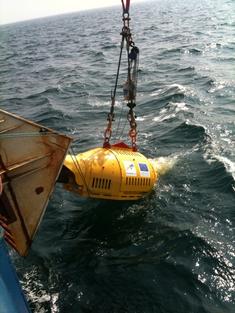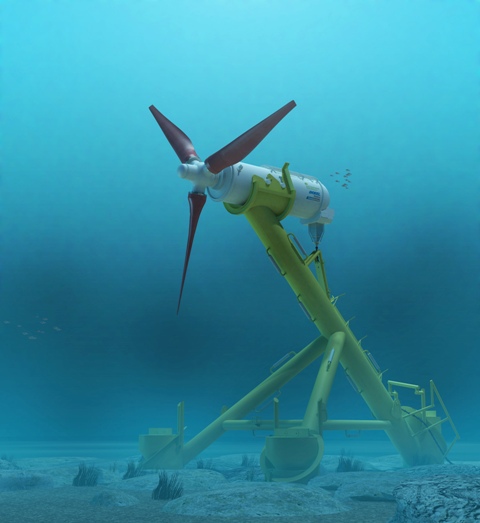
 The South West RDA’s (Regional Development Agency) pioneering Wave Hub marine energy project has been safely installed on the seabed following a delicate operation to lower the 12-tonne hub into 55 metres of water, 16 kilometres offshore.
The South West RDA’s (Regional Development Agency) pioneering Wave Hub marine energy project has been safely installed on the seabed following a delicate operation to lower the 12-tonne hub into 55 metres of water, 16 kilometres offshore.
Wave Hub is creating the world’s largest test site for wave energy technology by building a grid-connected socket on the seabed off the coast of Cornwall in South West England, to which wave power devices can be connected and their performance evaluated.
The £42 million project has been developed by the South West RDA and is a cornerstone of its strategy to develop a world class marine energy industry in South West England and the UK.
Wave Hub was lowered to the seabed using a crane on board the cable laying ship Nordica and touched down at 15.12 on Friday September 3. Over the last two days the hub’s four 300m ‘tails’ have been positioned on the seabed and later today the vessel Tideway Rollingstone will start to place the first of 80,000 tonnes of rock on top of the 25km cable connecting Wave Hub to the shore to hold it in place.
News of Wave Hub’s successful installation was welcomed by UK Science Minister David Willetts, who said: “It is fantastic news that Wave Hub has now been deployed on the ocean floor – this ground breaking project will strengthen the UK’s position at the forefront of the wave energy sector. The UK is already leading the way, with 25 per cent of the world’s wave and tidal technologies being developed here. This is a huge opportunity for UK business – the sector could be worth £2 billion by 2050 and it has the potential to create up to 16,000 jobs by 2040.”
The RDA’s Wave Hub General Manager Guy Lavender said: “Seeing Wave Hub lowered into the water was the culmination of more than seven years’ hard work by hundreds of people and the fact that it was designed and built in this country is testimony to the skills and experience that the UK already has in the fledgling marine renewables industry.
“Wave Hub will be on the seabed for the next 25 years, helping the world gain invaluable knowledge about how we tap the vast energy potential of our oceans in the pursuit of clean, abundant, renewable energy and cementing the UK’s position at the forefront of this green power revolution.”
Groups of wave energy devices will be connected to Wave Hub and float on or just below the surface of the sea to assess how well they work and how much power they generate before being commercially produced and deployed. There are four berths available at Wave Hub, each covering two square kilometres. Wave Hub will have an initial maximum capacity of 20MW (enough electricity to power approximately 7,000 homes) but has been designed with the potential to scale up to 50MW in the future. The first wave energy devices are expected to be deployed in 2011.
Wave Hub is connected to the shore via a 25km, 1,300-tonne subsea cable that has been laid over the last few weeks from the beach at Hayle on the north Cornwall coast out to the Wave Hub site.
The 300-metre cable has been made in one continuous length and is made up of six copper cores, 48 fibre optic cables, two layers of steel wire armouring and an outer polymer sheath. It is 16 centimetres in diameter and weighs 1,300 tonnes.
Wave Hub is being funded with £12.5 million from the South West RDA, £20 million from the European Regional Development Fund Convergence Programme and £9.5 million from the UK government.




Resources like the one you mentioned here will be very useful to me! I will post a link to this page on my blog. I am sure my visitors will find that very useful.
its great stuff you written up on this blog. Had been looking for this all over. Good work